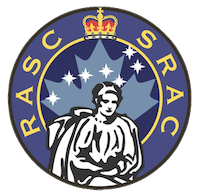James Edward Keeler (September 10, 1857 – August 12, 1900) was an American astronomer.
Keeler worked at Lick Observatory beginning in 1888, but left after being appointed director of the University of Pittsburgh's Allegheny Observatory in 1891. He returned to Lick Observatory as its director in 1898, but died not long after in 1900. His ashes were interred in a crypt at the base of the 31-inch Keeler Memorial telescope at the Allegheny Observatory.
Along with George Hale, Keeler founded and edited the Astrophysical Journal, which remains a major journal of astronomy today.
His parents were William F. and Anna (née Dutton) Keeler. He had married in 1891 and left a widow and two children.
Keeler was the first to observe the gap in Saturn's rings now known as the Encke Gap, using the 36-inch refractor at Lick Observatory on 7 January 1888. After this feature had been named for Johann Encke, who had observed a much broader variation in the brightness of the A Ring, Keeler's contributions were brought to light. The second major gap in the A Ring, discovered by Voyager, was named the Keeler Gap in his honor.
In 1895, his spectroscopic study of the rings of Saturn revealed that different parts of the rings reflect light with different Doppler shifts, due to their different rates of orbit around Saturn. This was the first observational confirmation of the theory of James Clerk Maxwell that the rings are made up of countless small objects, each orbiting Saturn at its own rate. These observations were made with a spectrograph attached to the 13-inch Fitz-Clark refracting telescope at Allegheny Observatory.
His observations with the Lick Crossley telescope helped establish the importance of large optical reflecting telescopes, and expanded astronomers' understanding of nebulae. After his untimely death, his colleagues at Lick Observatory arranged for the publication of his photographs of nebulae and clusters in a special volume of the Lick Observatory Publications. Keeler discovered two asteroids, one in 1899 and one in 1900, although the second was lost and only recovered about 100 years later.
After the discovery of pulsars in 1967, optical images of the Crab Nebula taken by Keeler in 1899 were used to determine the proper motion of the Crab Pulsar.
Keeler was awarded the Henry Draper Medal from the National Academy of Sciences in 1899. In 1900 he was elected president of the Astronomical Society of the Pacific.
In 1880, Allegheny Observatory director Samuel Pierpont Langley, accompanied by Keeler and others, went on a scientific expedition to the summit of Mount Whitney. The purpose of the expedition was to study how the Sun's radiation was selectively absorbed by the Earth's atmosphere, comparing the results at high altitude with those found at lower levels. As a result of the expedition, a 14,240-ft. peak near Mount Whitney was named the "Keeler Needle".
In addition to the Keeler gap in Saturn's rings, craters on Mars and the Moon are named in his honor, as is the asteroid 2261 Keeler.
Prof. Keeler was elected an honorary member of the Astronomical and Physical Society of Toronto on 1895-08-20. Keeler wrote back to the Society on the 24th Instant.:
G.E. Lumsden, Esq., Corresponding Secretary of the Astronomical and Physical Society of Toronto:
My Dear Mr. Lumsden, - Your letter, informing me that the Astronomical and Physical Society of Toronto elected me an honorary member at its last meeting, has just been received. It is needless to say that I value highly this signal mark of the Society's approval, and I beg that you will convey to the members my heartfelt thanks, and the assurance of my sincere appreciation of the honor they have done me.
With regard to my spectroscopic observations of Saturn, it is proper to point out that Prof. Seeliger, in a very interesting article in the Astronomische Nachrichten (No. 3,295), has taken exception to my conclusion that these observations afford a proof of the meteoric constitution of the ring, as distinguished from a confirmation of the accepted views. I have lately written a note which will probably be printed in the Astronomische Nachrichten, in defence of my original position; at the same time I have no intention of claiming for these observations anything that is not justly their due. What their value may be I am well content to leave to the estimation of others.
For some time past I have been engaged (among other things) in experiments on photographing planetary spectra, and have succeeded in obtaining excellent photographs extending to a considerable distance below the D lines. The dispersion is pretty high (the same as that employed in my Saturn photographs) and the D lines are widely separated. These spectra, therefore, include the principal telluric bands of water vapour about which there has recently been so much said in connection with the spectrum of Mars. At the next opposition of Mars all the questions relating to the bands of water vapour in its spectrum can be settled by photography. Unfortunately Mars was out of reach beforemy experiments began. The observations, however, to be of real value as a test of the existence of an atmosphere, will probably have to be made in some more favoured climate.
Yours very sincerely,
James E. Keeler
Surname:
Keeler
Title/Given Name:
Dr. James Edward
Nation(s):
USA
Start:
1895
End:
1900

